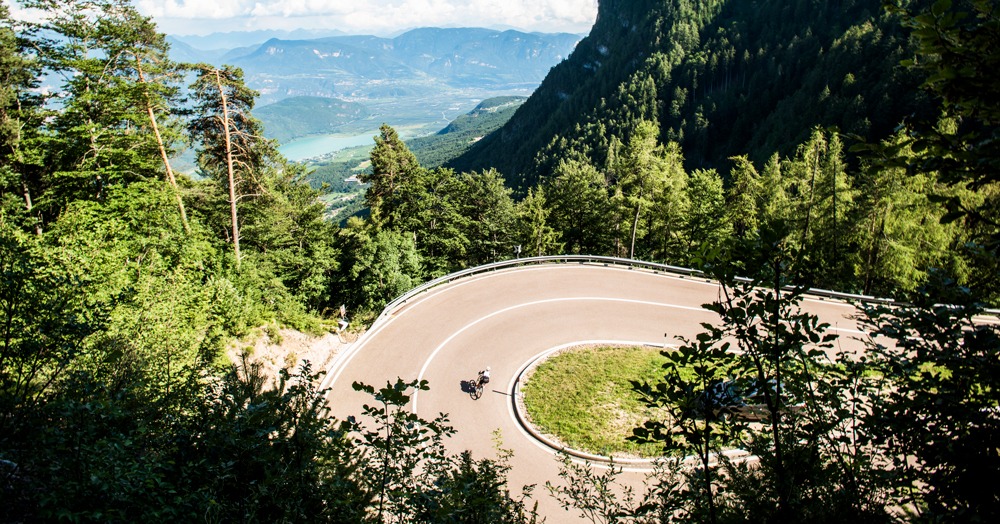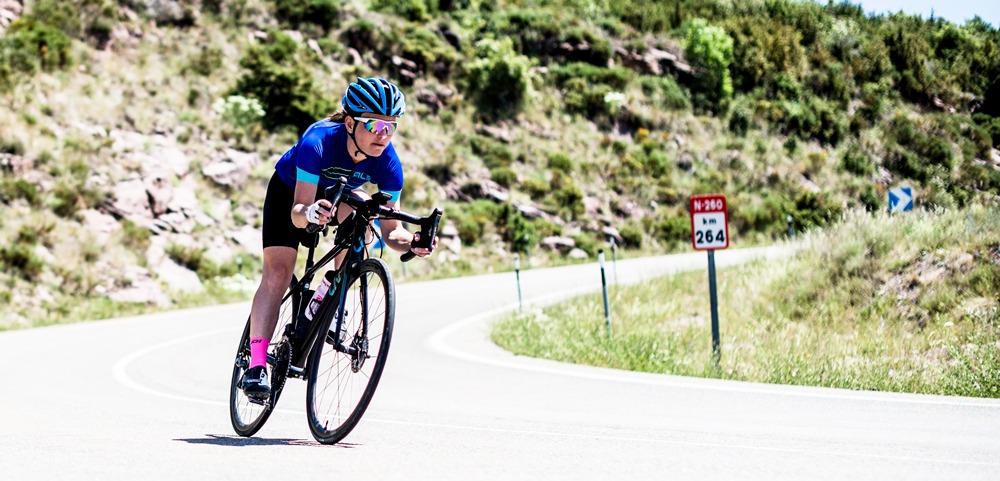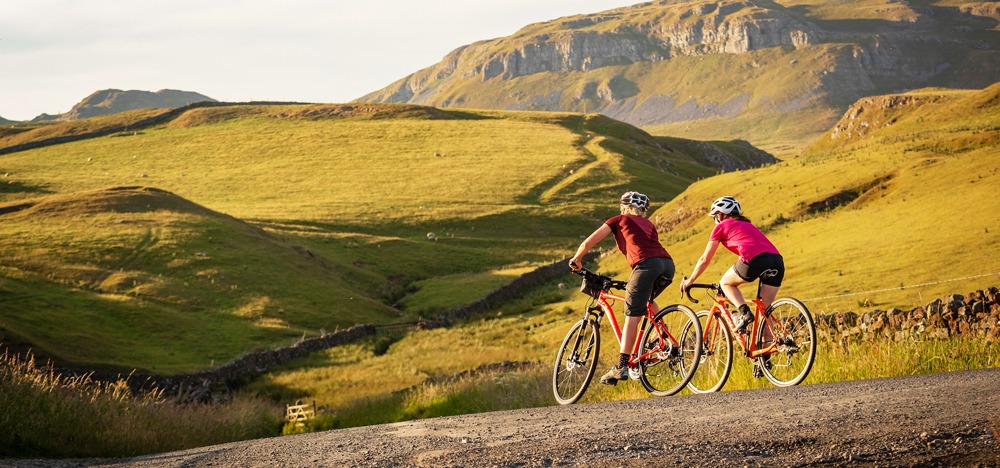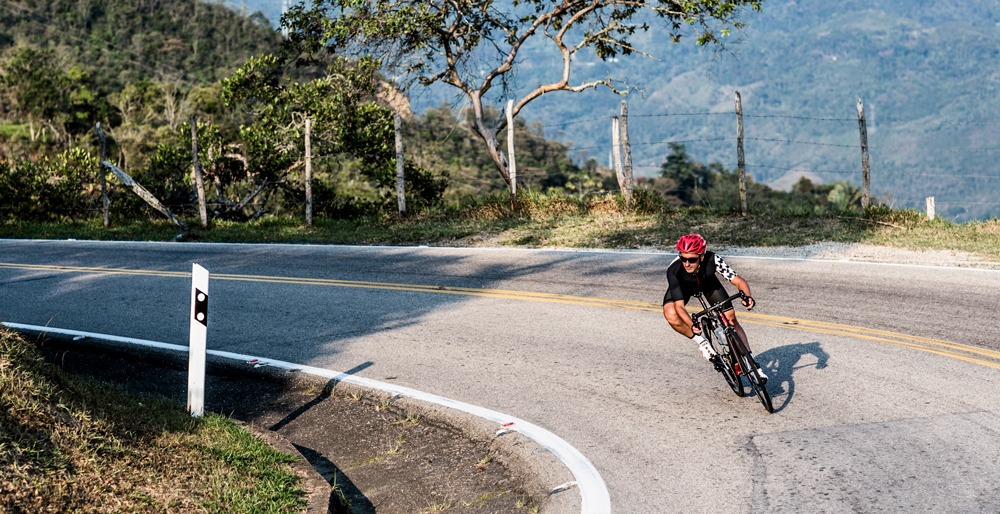
What goes up must come down! If you’ve conquered that big hill it is time to enjoy the reward of flying down the other side. Descending is one of the biggest thrills in cycling, it’s free speed, having expended a lot of energy to gain the top of a hill you can then ease off the pedals and cruise your way to the bottom. If you feel tense or nervous on a descent or are braking excessively you will be missing out on the pleasure and the benefits.
Position on the bike
You don’t have to do a Sagan style superman or hug the top tube to be fast downhill. Keep your body weight evenly balance between your arms and backside (unless it gets really steep). Move your hands to the drops to help keep your bodyweight lower and makes your position more aerodynamic, braking from the ends of the levers also gives you more braking power. Push your hands into the bars, bend your elbows and lower your upper body, push your heels down so there is some pressure on the pedals. All this downward force means your bike remains pinned to the road and you aren’t bouncing around on top of it.

Look ahead
Things come up a bit quicker when you are going fast downhill so you need to make sure you are scanning the road ahead. Look for uneven road surfaces, holes or loose gravel that you need to avoid. Look at the shape of the tree, hedge or fence line for an indication of which way the road is going to turn next. To help work out how fast a turn or corner is coming up look for the vanishing point where the two sides of the road come together in your vision, where the hedge stops being parallel and one side appears to bend to touch the other. The closer the vanishing point is to you, the closer the corner.
Speed management
Riding downhill you need to maintain a speed you feel comfortable at and confident that you would be able to deal with any hazards that arise. As you get more experienced your comfortable speed is likely to increase. On a clear stretch of road with no hazards or corners you can let the brakes off and gradually let the bike gather speed, where safe, so you can develop a sense of how your bike feels when it is going a bit quicker.
To manage your speed, use your brakes, ideally back brake first or squeeze both together gently. Squeeze gently then release them fully, don’t keep them a little bit on as this leads to friction which creates heat and can cause a tyre to blow out (on rim brakes) or lead to brake fade (on disc brakes).

Cornering
Few descents are completely straight so you will need to tackle bends and corners. When you see a bend approaching gauge your distance and slow down to a speed you are happy turning at whilst you are still in a straight line. If you try to brake whilst turning your wheels are more likely to lock up and slide as they need to be turning to have traction to corner smoothly.
Invariably we steer to where we are looking. Look around the bend and keep your eyes focused on where you want to go, this helps you position your body. Bring your inside knee up and straighten your outside leg, pushing down with your heel, at the same time push down slightly with your inside hand. This balances your weight and helps to lean the bike as you turn.
Carrying Speed
At the bottom of your hill, if the road immediately goes up another climb, you want to carry as much momentum as possible. This way you can get as far up it as possible before the pedalling starts. If you see a scenario ahead, of a dip and then a rise, be confident carrying your speed into the upslope as gravity will naturally slow you down without the need for braking. Overall this will make your cycling faster and easier.

Click here for more expert advice on everything cycling!
Eager to put these top tips to the test? Check out our range of cycling holidays to inspire your next cycling adventure.
Looking for the ultimate descent? Why not take on one of our road cycling mountain challenges?
